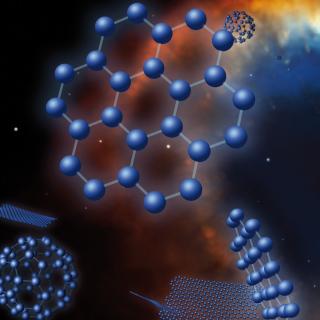Bibcode
Masseron, T.; García-Hernández, D. A.; Zamora, O.; Manchado, A.
Bibliographical reference
The Astrophysical Journal
Advertised on:
11
2020
Journal
Citations
12
Refereed citations
11
Description
The recently discovered phosphorus-rich stars pose a challenge to stellar evolution and nucleosynthesis theory, as none of the existing models can explain their extremely peculiar chemical abundances pattern. Apart from the large phosphorus enhancement, such stars also show enhancement in other light (O, Mg, Si, and Al) and heavy (e.g., Ce) elements. We have obtained high-resolution optical spectra of two optically bright phosphorus-rich stars (including a new P-rich star), for which we have determined a larger number of elemental abundances (from C to Pb). We confirm the unusual light-element abundance pattern with very large enhancements of Mg, Si, Al, and P, and possibly some Cu enhancement, but the spectrum of the new P-rich star are the only ones to reveal some C(+N) enhancement. When compared to other appropriate metal-poor and neutron-capture enhanced stars, the two P-rich stars show heavy-element overabundances similar to low neutron density s-process nucleosynthesis, with high first-peak (Sr, Y, and Zr) and second-peak (Ba, La, Ce, and Nd) element enhancements (even some Pb enhancement in one star) and a negative [Rb/Sr] ratio. However, this s-process is distinct from the one occurring in asymptotic giant branch (AGB) stars. The notable distinctions encompass larger [Ba/La] and lower Eu and Pb than their AGB counterparts. Our observations should guide stellar nucleosynthesis theoreticians and observers to identify the P-rich star progenitor, which represents a new site for s-process nucleosynthesis, with important implications for the chemical evolution of our Galaxy.
Related projects

Nucleosynthesis and molecular processes in the late stages of Stellar Evolution
Low- to intermediate-mass (M < 8 solar masses, Ms) stars represent the majority of stars in the Cosmos. They finish their lives on the Asymptotic Giant Branch (AGB) - just before they form planetary nebulae (PNe) - where they experience complex nucleosynthetic and molecular processes. AGB stars are important contributors to the enrichment of the
Domingo Aníbal
García Hernández